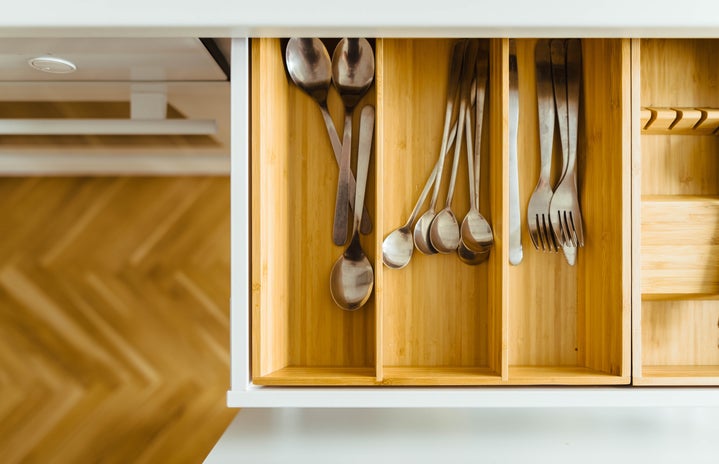We know that water helps keep us hydrated, that candy is not the healthiest snack choice and that a burger and fries for dinner every night is not going to improve our figure. But what does our diet do for our skin? Does what we eat have a dramatic effect on our complexion? It might. Her Campus hit the books to find out the best and worst foods for your skin as well as what foods in your kitchen can make quick, easy and nourishing facemasks!
The Best Foods For Your Skin
1. Low Fat Yogurt
Low fat dairy products can do wonders for your skin. These products are packed with Vitamin A, which is an element that is vital to our skin’s health. Liz Lipski, a nutrition expert and Ph.D., says that Vitamin A also helps our intestines, and “anything that helps keep digestion normal, any live bacteria or enzymes, is also going to be reflected in healthy-looking skin.” Vitamin A aids in repairing skin tissue, which will especially benefit people with dry and flaky skin.
2. Antioxidant-Rich Fruits
Blackberries, strawberries, blueberries and plums. Your skin will love these fruits because of their high antioxidant content. The antioxidants help prevent cell damage, which keeps your skin looking younger longer. While these four fruits have the highest content of antioxidants, artichokes, beans, prunes and pecans also have their fair share and can benefit your skin as well.
3. Salmon
Fishy foods aren’t especially appetizing to everyone, but the benefits of salmon for your skin might convince you to mix a little more into your diet. Salmon contains fatty acids which, according to Yelmokas McDermott, Ph.D. and nutritionist, help strengthen the cell membrane, allowing the cells to more efficiently lock in moisture and even prevent inflammation in your arteries. The most common and beneficial fatty acid is Omega 3, which is packed into salmon. If you can’t stomach the fishy flavor of salmon, try to add some walnuts or flax seed oil into your diet as another source of these fatty acids.
4. Whole wheat bread products
Whole wheat products contain an antioxidant called selenium. Selenium has been the focus of several studies that have found correlations with higher levels of selenium resulting in lower risk of skin cancer and other kinds of cancer. A study of people with selenium deficiencies and ultraviolet radiation published in the journal of Clinical and Experimental Dermatology revealed that doses of selenium could even prevent sunburn. You can also increase your selenium intake by adding turkey, tuna, and brazil nuts into your diet.
5. Green Tea and Water
The benefits of Green Tea go far beyond improving your skin. Studies published in The Archives of Dermatology reveal that the polyphenolic compounds in green tea act as an anti-inflammatory, helping to prevent skin tumors. In addition to the increase of your skin’s defense against skin cancers, it could also help fight against UV radiation damage. Water contributes to your skin’s vitality in the same way it contributes to your body’s, by keeping it hydrated and looking healthy. We should be drinking six to eight glasses of water a day, which helps your cells maintain water and move out toxins.
[pagebreak]
The Worst Foods For Your Skin
1. Alcohol and Caffeine
After reading the benefits of green tea and water, it is clear that your skin needs to stay hydrated in order to be healthy. Alcohol and caffeine are both very dehydrating, causing your internal organs to metabolize any water you consume before it can reach your skin. Because alcohol and caffeine are diuretics, they rapidly deplete the water in your body, starving your skin of the moisture it desperately needs. If these are two things that are a big part of your everyday diet, it is imperative that you also drink more than the recommended eight glasses of water per day.
2. High Glycemic Foods
Foods with a high glycemic index, such as pastas, white breads, potatoes, and chips, not only are associated with higher weight, but have also been shown to worsen acne symptoms. Professor Neil Mann and Robyn Smith, Ph.D., conducted a study that proved those with diets high in these carbohydrates, which cause an increase in glucose and insulin levels, had worsened acne symptom while those with a low glycemic diet showed a 50% decrease of acne. Try substituting these white foods for whole grains and you may see a significant improvement in your skin.
3. Fried Foods
While it is common knowledge that fried foods are far from a healthy choice, they can also cause oil buildups and harm your skin. While it has not been proven that these foods are directly related to breakouts, it has been debated that fried foods contribute to the trapping of bacteria and causing of blemishes. Doris J. Day and Sondra Forsyth even name fried foods in their list of the worst foods for your skin in their book, Forget the Facelift: Turn Back the Clock with a Revolutionary Program for Ageless Skin. Given that we all know these foods aren’t good for us anyway, we say why not try to skip them just in case?
4. Chocolate – MYTH!
Don’t worry chocolate-lovers, the belief that chocolate causes breakouts is actually a myth! While some have debated the effects of sugar and our skin, the negative findings are mainly traced back to sugar from high glycemic foods. Dark chocolate is actually a low glycemic food and milk chocolate, when eaten in moderation, isn’t that bad either. Don’t worry about your occasional chocolate indulgence leading to a tiny mountain range on your chin, just try to stick to dark chocolate and of course, use self-control so that you don’t go overboard!
Who said the only thing we can do with food is put it in our mouths? There are all kinds of possibilities for things you can do with your food… like putting it on your skin! Check out these yummy homemade facemasks that are delicious without any of the calories…
[pagebreak]
Homemade Facemasks
1. Moisturizing honey mask
If you are battling dry skin, try rubbing a thin layer of honey on your face. Leave it for a few minutes, rinse with warm water and pat dry. Honey retains water and acts as a natural moisturizer. You can even mix it into a bath or rub it into your hair before shampooing to make your skin and hair feel silky smooth.
2. Pimple minimizing oatmeal mask
First, crack an egg and extract the yolk. Stir oatmeal into the egg whites until the mixture becomes thick like a mask. Apply on your face or to stubborn pimples. Allow the mask to harden for 15 minutes, and rinse off with warm water. The oatmeal and egg whites work together to dry out blemishes.
3. Skin softening avocado mask
To soften and moisturize your skin, mix avocado with a bit of almond oil and rub onto your face. Leave on your skin as long as you can to allow your skin to soak up Vitamins A and E in the avocado.
Next time you’re struggling with your skin, think twice before you head out to the store to spend lots of money on creams and cleansers and check your cupboards instead!
Sources
Yelmokas McDermott, Ph.D., Nutrition Research Center on Aging
Liz Lipski, Ph.D., www.innovativehealing.com
Clinical and Experimental Dermatology, Volume 25, Issue 8, pages 631-636
Green Tea and Skin, Nihal Ahmad, Ph.D.
Arch Dermatol., Pages 989-994
Neil Mann and Robyn Smith, American Journal of Clinical Nutrition, Pages 247-256
Doris J. Day and Sondra Forsyth, Forget the Facelift: Turn Back the Clock with a Revolutionary Program for Ageless Skin

